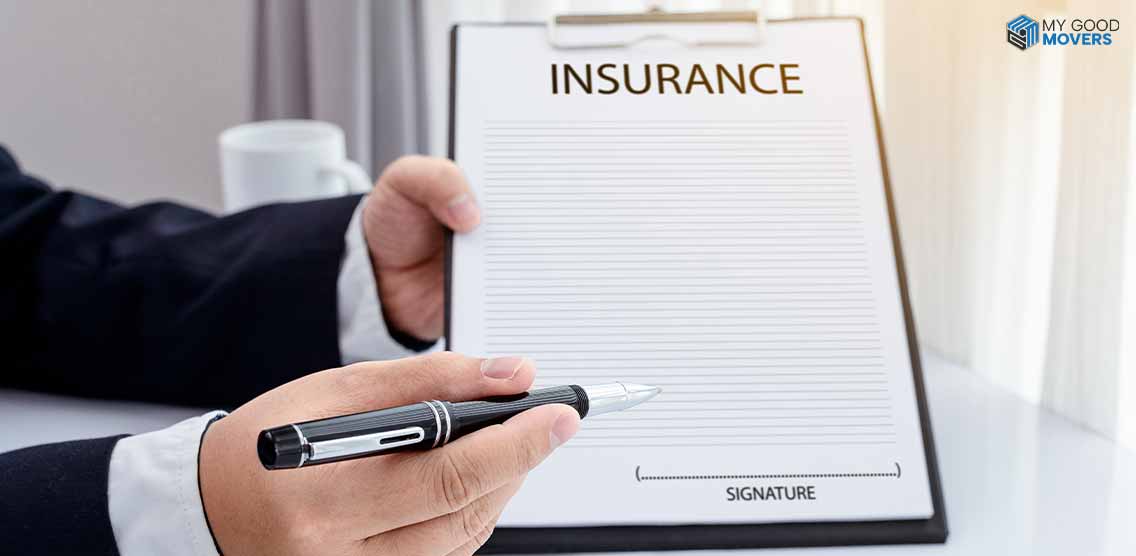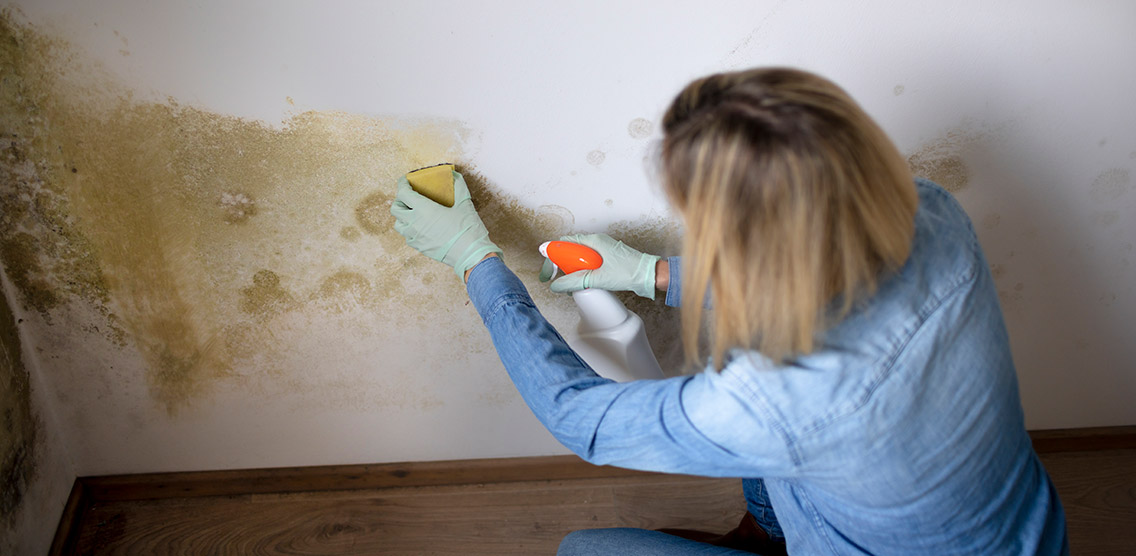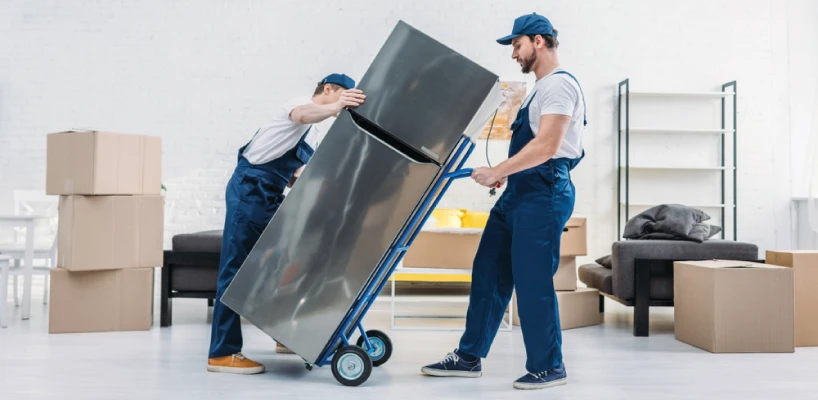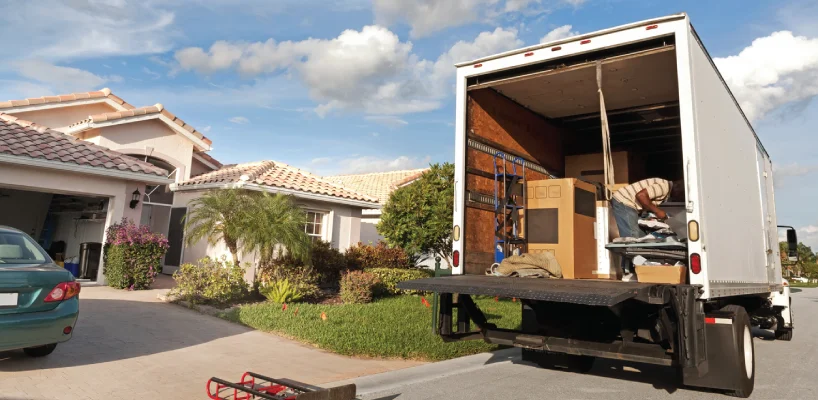Moving is both an art and a science, and it’s the things we leave behind or break along the way that often teach us the most.
Relocating can be an exciting yet overwhelming experience. Whether you are moving across town or across the country, it's an emotional rollercoaster that includes not just saying goodbye to a familiar place but also navigating the logistics of safely transporting your belongings.
However, did you know that 20% of Americans experience damage to their goods during a move? That’s one in five households!
Imagine unpacking a cherished family heirloom or a brand-new TV only to discover it's been damaged during transit. Frustrating, right? The truth is, moving damages are more common than you might think.
In fact, the U.S. Census Bureau reports that nearly 31 million people move every year in the United States, and a significant number face the headache of broken or lost items during their move.
The cost of damages can add up, too—Americans collectively spend over $86 billion annually on moving. Not surprisingly, with this volume of moves, items frequently get damaged despite all precautions.
Now, dealing with damaged goods after a move is something no one wants to do, but it’s an unfortunate reality for many. There are steps you can take to minimize the risk, and if the worst happens, there are clear procedures to follow to get your compensation or repairs.
Let’s discuss the best ways to handle it if it happens to you.
Step 1: Inspect Your Goods Upon Delivery
As soon as your belongings arrive, it’s essential to inspect everything carefully. Even though it may feel tedious after a long moving day, this first step is crucial. Inspecting the goods immediately allows you to spot damage while the moving crew is still around so you can document issues immediately. Look for:
- Scratches, dents, or cracks on furniture
- Broken glass
- Missing screws or broken legs on tables or chairs
- Tears in upholstery or mattresses
Take photos of the damaged goods and keep them for documentation. Having clear photographic evidence is one of the most important things you can do to support your claim.
Step 2: Report Moving Damages
If you notice damage, report it to your moving company immediately. Most movers have policies for handling claims, and the quicker you notify them, the smoother the process will be.
While the Federal Motor Carrier Safety Administration (FMCSA) allows up to nine months to file a claim, don’t delay—address the issue as soon as possible.
Moving companies typically require:
- Your Bill of Lading (the contract between you and the mover)
- Inventory lists
- Photos and detailed descriptions of the damage
Many people are unaware of this, but moving company liability for damaged goods is typically limited to $0.60 per pound unless you have opted for Full Value Protection.
This basic coverage may not be sufficient for higher-value items like electronics or fine furniture, so it’s important to know exactly what kind of protection you have secured beforehand.
Step 3: Compensation for Damaged Items During a Move
There are different ways to be compensated depending on the type of insurance coverage you choose before the move.
As mentioned, standard protection only offers minimal coverage. However, Full Value Protection can provide you with:
- A replacement of the damaged item
- A repair of the item
- Monetary compensation equal to the full value of the item
Be aware that antique or high-value items may not be fully covered under these policies. You should have additional insurance for particularly rare or valuable goods.
If you opted for additional coverage, getting reimbursed for moving damages will be more straightforward.
Also read Moving Insurance Policy - How to Choose the Right One.
Step 4: File a Claim for Damaged Goods
To officially start the compensation process, file a formal claim with the moving company. Many moving companies provide online platforms for claims submission, while others may require forms to be sent via email or mail.
When filing, ensure you provide:
- The inventory list
- Pictures of the damage
- Copies of receipts or invoices proving the value of the damaged goods
- Written descriptions of the damage
- The Bill of Lading
The process may also involve an in-person inspection of the damaged items by the moving company’s claims adjuster, who will determine the extent of the damage and how it aligns with the compensation being requested.
Keep all correspondence related to the claim, as the timeline for resolution can be lengthy.
Step 5: Handle Rejected Claims or Low Offers
Unfortunately, not all claims are approved, or you may receive an offer lower than you anticipated. If the moving company denies your claim, you still have options.
According to FMCSA guidelines, you can escalate disputes to arbitration, an independent process that resolves disputes outside of court. Alternatively, if the company refuses to provide adequate compensation, you may file a complaint with FMCSA or your state’s regulatory body.
If your claim gets rejected, it might be because:
- You can’t prove the damage occurred during the move
- The item was self-packed (and thus not covered by the mover)
- The damage is deemed weather-related
Step 6: Protecting Your Belongings During a Move
Before the move, protecting your belongings during a move can help prevent potential damage. Here are a few tips to minimize the risk:
- Proper Packing: If you are packing items yourself, invest in high-quality packing materials. Double-box fragile items and use bubble wrap or furniture blankets for large pieces.
- Label Fragile Items Clearly: Mark boxes containing fragile items, ensuring movers know to handle them with care.
- Move Valuables Yourself: If possible, transport valuable items like jewellery, heirlooms, or electronics in your personal vehicle to prevent damage.
- Insurance: Always consider opting for Full Value Protection, especially for items that are irreplaceable or expensive to repair.
Click and learn Important Questions to Ask Before Hiring Movers.
Moving Company Liability for Damaged Goods
By law, moving companies in the U.S. are required to offer basic coverage, but this is very limited. It's vital to understand what your contract states regarding liability. According to FMCSA, movers cannot absolve themselves from all liability, but there may be terms that reduce the amount of compensation if the mover is not responsible for packing the item.













































































































































 (239) 799–6077
(239) 799–6077